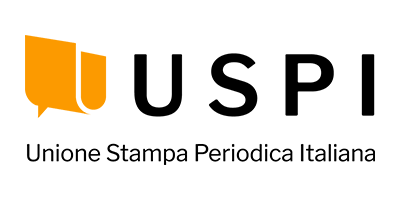Italy has to invest more in infrastructures, PwC says
Digital and physical infrastructure gaps make Italy less efficient and competitive. PNRR can help.

Improving Italy's "digital posture" it's, first of all, a race in eliminating all the infrastructural gaps that our country has accumulated over the years. Gaps that are certainly related to Digital Tranformation, says now PwC Italia. But also the good old physical infrastructure pose some important issues that must be faced, and quite fast.
In Italy, explains PwC, the gap between current investments in traditional infrastructure and the optimal needs will amount, by 2040, to 373 billion euros (0.73% of national GDP). The sectors most affected by this delay are railways (about 238 billion euros), ports (79 billion) and energy grid (39 billion). An important gap that leads to another, as explained by Andrea Toselli, President and CEO of PwC Italia: "The physical infrastructural gap in our country costs 70 billion euros every year in terms of exports, equal to 15% of the total".
So, better to act fast. For this reason, PNRR allocates a total of 81.4 billion euros (about 22% of what would be needed) for investments in the railway network, road safety, intermodality, integrated logistics, sustainable mobility. All with direct references, in every field, to the digital infrastructures that are used to help the country's evolution. PwC also estimates that PNRR funds will generate various multiplier leverage effects, involveming public and private actors. Thanks to these and other similar effects, PwC forecasts that PNRR will lead to a total of 714 billion euros in investments and over 490 billion euros of added value by 2036.
PwC also estimates that PNRR funds will generate various multiplier leverage effects, involveming public and private actors. Thanks to these and other similar effects, PwC forecasts that PNRR will lead to a total of 714 billion euros in investments and over 490 billion euros of added value by 2036.
The digital gap
There is really a lot to do also to fill Italy's digital gap. "In Italian companies, digital intensity is at 60%. It should be at 90%", explains Toselli. PwC underlines that growth forecasts for Italian digital sector are conditioned by PNRR successful implementation. Without it, Italian companies will lose funds and aids for about 50 billion euros, by 2026.
In the most optimistic scenario, Italian digital market will grow to 95 billion euros in 2024, also thanks to Transition 4.0 plan, strengthened by the 2021 State Budget with approximately 24 billion euros linked to the Recovery Plan. PAs, banks, insurance companies and utilities have learned over the last two years that they must invest in technologies to be able to manage any emergency. The issue of SMEs remains: they're still digitally behind their European counterparts.
Related news
Last News
RSA at Cybertech Europe 2024
Alaa Abdul Nabi, Vice President, Sales International at RSA presents the innovations the vendor brings to Cybertech as part of a passwordless vision for…
Italian Security Awards 2024: G11 Media honours the best of Italian cybersecurity
G11 Media's SecurityOpenLab magazine rewards excellence in cybersecurity: the best vendors based on user votes
How Austria is making its AI ecosystem grow
Always keeping an European perspective, Austria has developed a thriving AI ecosystem that now can attract talents and companies from other countries
Sparkle and Telsy test Quantum Key Distribution in practice
Successfully completing a Proof of Concept implementation in Athens, the two Italian companies prove that QKD can be easily implemented also in pre-existing…
Most read
Integral AI Unveils World’s First AGI-capable Model
#AGI--Integral AI, a global leader in the development of embodied AGI, today announced the successful testing of the world’s first AGI-capable model.…
Reply Achieves the AWS Agentic AI Specialization and Is Named an Implementation…
Reply [EXM, STAR: REY] announced that it has achieved the Amazon Web Services (AWS) Agentic AI Specialization, a new category within the AWS AI Competency.…
Tecnotree Emerges as CX Catalyst Winner for Impact at The Fast Mode Awards…
Tecnotree, a global digital platform and services leader for AI, 5G, and cloud-native technologies, has won the CX Catalyst award for Impact at The Fast…
CoMotion GLOBAL 2025 Launches in Riyadh: Global Mobility Leaders Unite…
Riyadh is rapidly becoming one of the world's most ambitious urban mobility laboratories, where next-generation technologies move from blueprint to real-world…






